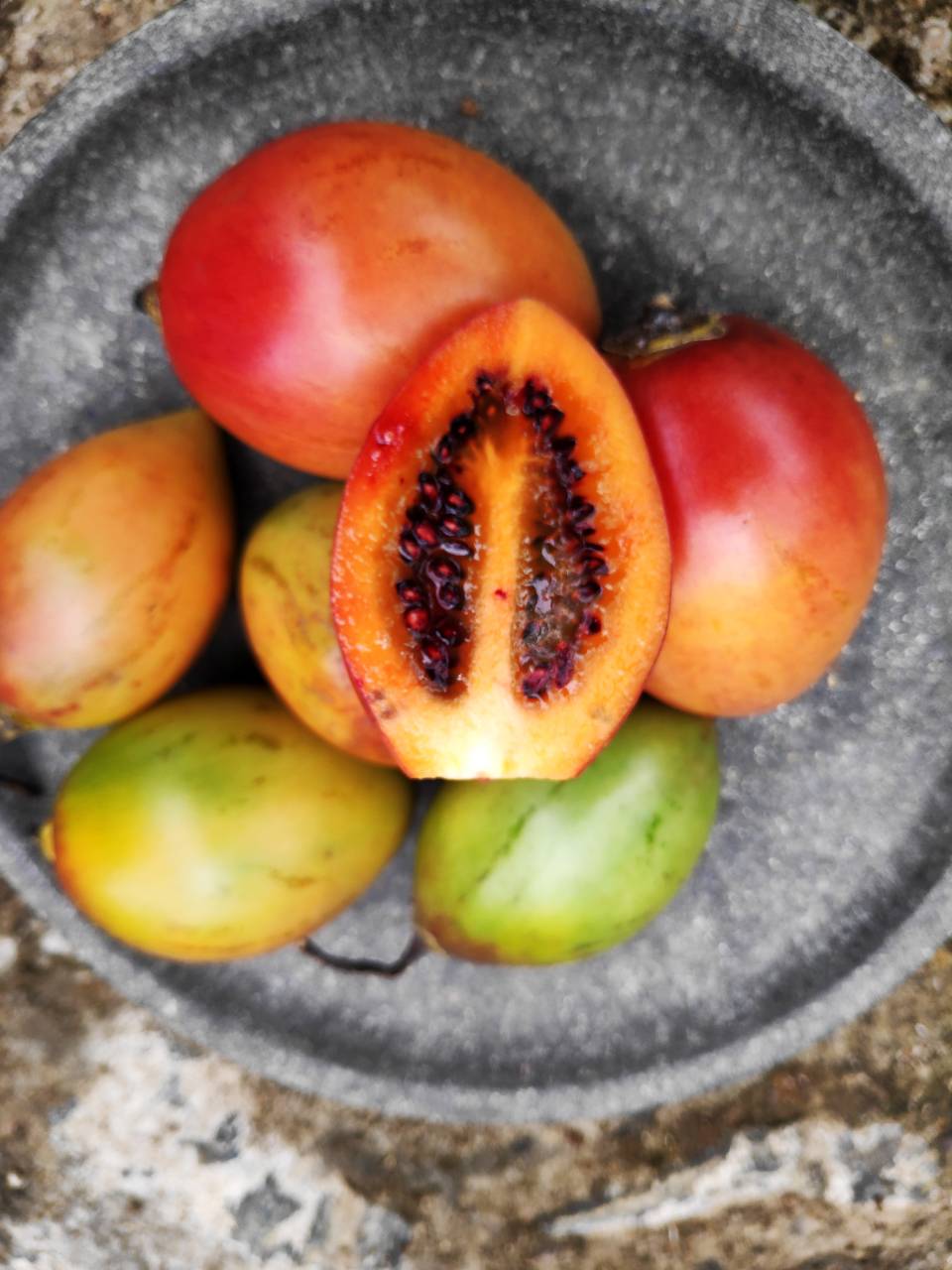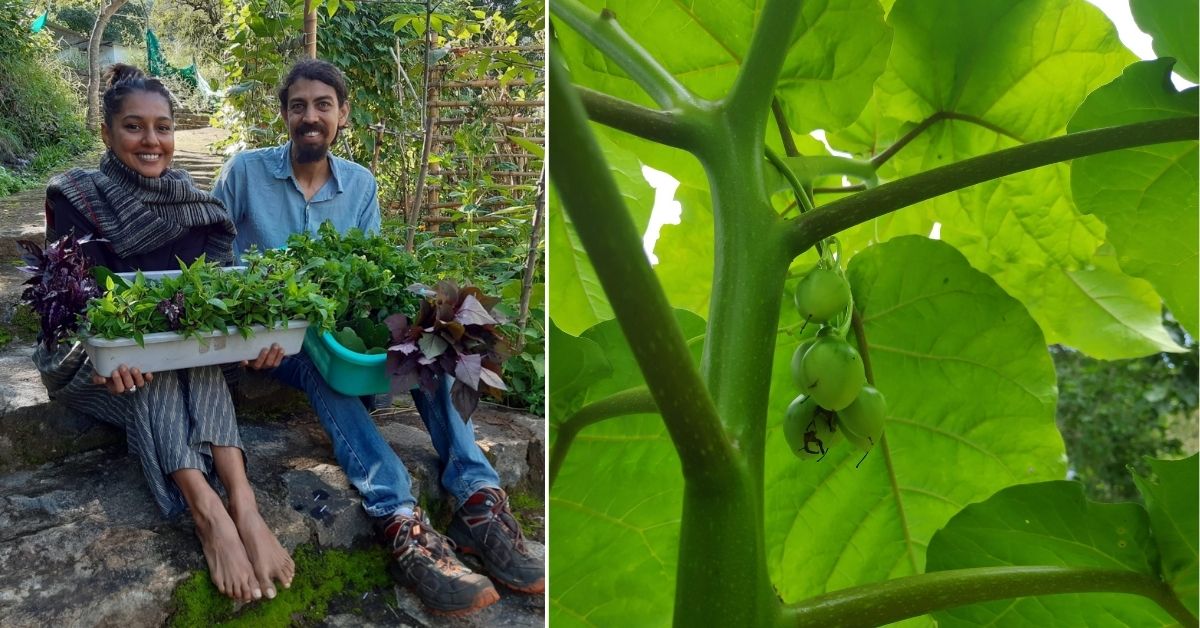We know that tomatoes grow on shrubs and sometimes creepers. But did you know that they grow on trees as well? Known as Tamarillo or the Naga Tree Tomato in India, this variety resembles a tomato externally, but tastes different.
It originated in the Peruvian Andes and was introduced to India in the 1800s by explorers who carried the seeds here. Currently, tree tomatoes are grown in the hilly regions of West Bengal, Maharashtra, Uttar Pradesh, and in the Nilgiris region.
Unable to view the above button? Click here
“It is denser in texture, unlike the watery tomato, and is sour, sweet and fruity. It reminded me of a cross between peaches, guava and tomato,” says Neha Sumitran (35), a resident of Kodaikanal, who is currently growing this tree in her home.

She procured the cutting from a friend’s backyard last year, and today the tree is about 7ft tall and has produced fruits twice. However, Neha was unable to harvest the ripe fruits as the monkeys would often devour them.
In an interview with The Better India, she shares how she came across the fruit and grew it in her backyard.
From market to backyard
In 2017, Neha, who was working as a journalist, and her husband Vashishta left their city life in Mumbai to be more in touch with nature. After vacating their home, they stayed in Goa for a while and spent a year looking for the perfect place to settle down.
“We decided to visit Kodaikanal, the ‘Queen of Hills’, for a few weeks to understand if we could adapt there, grow food, and create a self-sustaining lifestyle. To our luck, when we were there, we also got the opportunity to participate in a permaculture workshop which gave us a glimpse into gardening,” says Neha, adding that one of her favourite things to do in Kodai is visiting markets.
While strolling through a Sunday pop-up market, she came across a vendor selling a fruit that looked like a tomato, along with other fruits. When she enquired what it was, the lady told her it was mare thakkali, which means tree tomato in Tamil.
“Being a curious foodie, I bought a few and tasted them raw. Apart from that, I also began to explore recipes that used tree tomatoes for cooking. In Tamil Nadu, this fruit is popularly used to make chutneys, jams and even added to rasam for a tangy taste,” says Neha.
In 2019, the duo rented a place in Pethuparai, which is located 40 kilometres away from Kodaikanal. They had a garden behind their home, where they started growing a food forest. While their garden has over 50 varieties of fruits and veggies, the duo focussed on growing perennial varieties so that they would never run out of ingredients for cooking.
“Annual species such as tomatoes and carrots are one-time producers. Once the vegetables are harvested, the crop must be circulated to grow another. However, perennial crops like kale, moringa or sweet potatoes grow for several years,” says Neha, adding that tree tomatoes are perennial plants.
In 2020, a friend who lived in Kodaikanal had a tree growing in her backyard and offered a cutting to Neha so that she could plant it in her garden.
Growing organically
Neha says she did not take too much effort or follow any special techniques to grow the tree tomatoes, as they were native to the region. However, she regularly added manure, compost, and even mulched the land with dry leaves.
She watered the cutting like the other plants and within seven months, the tree grew to a height of 7ft. Groups of tiny green tomatoes also started showing on the tree.
“Our garden is not fenced and monkeys visit our backyard often. To date, the tomatoes have grown twice on the tree but never had the time to ripen as the monkeys would eat them.We have no problem sharing with nature, but hope that we can taste them next season,” says Neha.
While Neha has not tasted the produce from her garden, she has purchased the fruit from the market several times and made a variety of chutneys and jams.
To know more, follow her on Instagram.
If you found our stories insightful, informative, or even just enjoyable, we invite you to consider making a voluntary payment to support the work we do at The Better India. Your contribution helps us continue producing quality content that educates, inspires, and drives positive change.
Choose one of the payment options below for your contribution-
By paying for the stories you value, you directly contribute to sustaining our efforts focused on making a difference in the world. Together, let's ensure that impactful stories continue to be told and shared, enriching lives and communities alike.
Thank you for your support. Here are some frequently asked questions you might find helpful to know why you are contributing?

